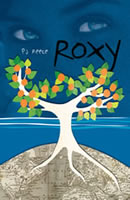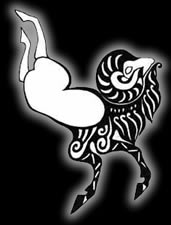
|
|
| Celeb Tattoos | Facts & Stats | Designs & Symbols | History | Culture | Links | Tattoo Galleries | Contact | |
|
Tattoos and the Heart of Fiction: Article © 2009 PJ Reece The novel’s protagonist wears a hidden tattoo. No butterfly or rose for this determined 17 year old-this is a text tattoo honouring a mythical paradise high in the Himalayas. She wears the tattoo over her heart, which serves to connect her to a loved one who is long gone. (Not your average tattoo for girls.) The story makes scant reference to the tattoo, yet the reader senses quite rightly that the girl’s belief in this Shangri-La has hardwired her to certain radical but loveable attitudes. And whatever shapes the hero’s life, cannot help but shape the story’s plot. The tattoo is literally a clue to what the book is about. And (literally again) it signifies where the story is headed. The importance of a central image in novels or films is well known by writers. It provides a nucleus around which readers can organize their understanding of (and even anticipate) the events of the plot. More importantly, it’s a visual/imaginal aid that helps us unlock the story’s meaning. Take The Girl with the Dragon Tattoo, by Stieg Larsson. The book’s UK publisher took the title all the way to the bank. In its original Swedish, the novel was called Men Who Hate Women. A key character in the story sports a dragon tattoo, but the motif is neither central to the story, nor even peripheral. It’s a thematic dead end, and readers are justifiably resentful. That’s why I mention it-because subconsciously readers know how uniquely effective a tattoo would be as a unifying device. The dragon turns out be a red herring.
Roxy’s Shangri-La tattoo is buried-under clothing and therefore understated-as many central images are. It has profoundly influenced Roxy’s inner life, and it continues to determine her course of action throughout the book, compelling her-like the salmon heading for its spawning grounds-to seek it’s source. Every good film or book has a compelling image that serves as the theme’s touchstone, and only rarely in film or literature has it been a tattoo. But a tattoo is uniquely effective, since for tattoo-wearers it is already a personal icon, a central image of their lives, and more importantly of their dreams. It pictorializes what might be difficult to express in words. Case in point-my own tattoo. A ram.
This is precisely what we ask of an emblem or myth or tattoo-or the central image in any good film or book-we want understanding without labourious thinking. We’re talking about an intuitive understanding that arises within the more crepuscular parts of our mind. This is not our logical mind-this is our design-mind at work. While reading a good book, the magical part of our brain thrives on hints and buried clues. It works overtime-often without our knowing it-to interpret minor details, throw-away lines, and hidden symbols such as Roxy’s Shangri-La tattoo. PJ Reece - www.pjreece.ca |
|
|
|
|
| Celeb Tattoos | Facts & Stats | Designs & Symbols | History | Culture | Links | Tattoo Galleries | Contact | |
 A design inked into the flesh suggests a powerful personal commitment to that image. If the tattoo is hidden, the owner may be especially disinclined to talk about it, since a picture is inherently anti-intellectual. I employed such a tattoo as a unifying image in my new novel, Roxy (
A design inked into the flesh suggests a powerful personal commitment to that image. If the tattoo is hidden, the owner may be especially disinclined to talk about it, since a picture is inherently anti-intellectual. I employed such a tattoo as a unifying image in my new novel, Roxy ( This starkly graphic design was found on a frozen mummy on the South Siberian Plain. The wearer was a Pazyryk, a tribe of Iron Age horsemen that ruled the grasslands of Central Asia 2500 years ago. (See "
This starkly graphic design was found on a frozen mummy on the South Siberian Plain. The wearer was a Pazyryk, a tribe of Iron Age horsemen that ruled the grasslands of Central Asia 2500 years ago. (See "